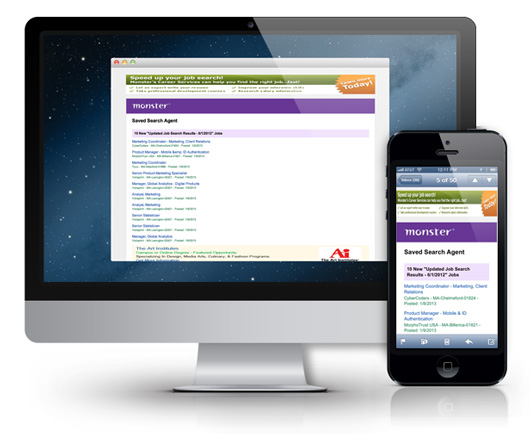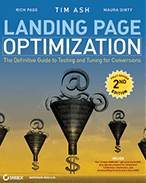7 Awesome Tactics for Skyrocketing Conversions from Your Email Marketing Efforts
Last updated |You may have tried testing and optimizing your website and conversion rates. But don’t forget to think out of the box and optimize an extension of your website – your email marketing campaigns! Yep, this is because one of the best ways of increasing your website conversion rates is by improving the effectiveness of your traffic sources, particularly your email marketing campaigns.
Optimizing these will get more people clicking from your emails and once they arrive on your website these more engaged visitors will be more likely to convert for your goals (like sales or signups). In other words, if you don’t test and optimize your email campaigns, you’ll be missing out on a huge amount of conversions. Here are 7 awesome tactics to help you do this!
Before we get started! It’s vital that you can do A/B testing in your email marketing platform to find variations that get the most clicks and conversions on site. If yours currently doesn’t allow you to do this easily, you should switch to a tool like Mailchimp or dotMailer that offers great built-in testing functionality. Now let’s get started!
1: Test and Optimize Your Subject Lines
If your readers aren’t inspired or interested in your subject lines, they won’t even read your email marketing content, and you will be wasting your efforts to optimize it (no matter how amazing it is). So it’s important you get this tested and optimized first! Here are some factors to consider when testing and optimizing your subject lines:
- Focus on stating the value of your email. Put yourself in your reader’s shoes and think what would make them open it, and make sure that’s in your subject line. Clever and smart subject lines may sound great to you or your boss, but your readers might not understand.
- Test personalizing by using reader’s name. People like seeing their name and are often more engaged by it, so test including it in the subject line (if you know it). Careful though, this occasionally might actually lower open rates, so always test.
- Test length – under 50 characters is best. Studies have shown that less than 50 characters is optimal. If you make it any longer you risk having some of your words and letters cut off. Because of this, you should also always put your most important words towards the beginning of the subject line.
- Test wording style to grab attention of your readers. Don’t be boring and generic with them – to increase opens try subject lines that pose interesting relevant questions, make provocative statements, or solving for reader’s needs.
- Test every time you send! What works for one type of email campaign might work different for another, so always test 2 or 3 subject lines each time you send an email campaign (to maximize impact, send each test version to 10% of your readers, then send winning version to the remaining large percentage of subscribers).
I could write a whole article about this, but if you want to learn more checkout this great infographic that describes subject line best practices in more depth.
2: Test and Optimize Your Calls-to-Action
One of the best ways to increase conversion rates on websites is to optimize your call-to-action links and buttons. And email campaigns are no different! They really help get people clicking to your website and converting on your website. Always give your readers a clear call-to-action in your emails – don’t just let them decide what to do next. Here are some quick areas to focus on for testing and improving usage of them:
- Wording of your call-to-actions. Make them intriguing and inspiring to click on, and most important, action based – never use ‘click here’ – very dull and uninspiring!
- Location of call-to-actions. Ideally always include one above the page fold (so they don’t have to scroll to see it), and one at the end of your main email content (particularly if your email is longer). Don’t bury them in the side bar of your emails, as you will risk your visitors missing them.
- Test the size, color and style of your buttons. Experiment and test several different combinations until you find the one that generates the most clicks and conversions on site. Don’t just presume what your web designers have given you will work the best! Don’t forget to include a supporting text link too, in case your readers have images turned off and don’t see your call-to-action buttons (more on this later).
- Minimize the number of call-to-actions. Don’t include too many different call-to-actions in your email content – focus on ones that relate to your major website conversion goals! The more you include, the more you risk causing your visitors not clicking on your most important ones (or not clicking on any if they really are confused about what to click on).
3: Optimize What Your Emails Look Like on Mobile Phones
A significant amount of internet users are now reading their mail on smart mobile phones like iPhones and Android phones. According to a recent study by the Relevancy Group, as many as 39 percent of consumers currently access one or more of their personal email accounts on a mobile device. Therefore, you need to check what your emails look like on the leading mobile devices and their much smaller screens to identify and fix any issues you see. If you don’t do this you will increase the chances of your mobile email readers finding it hard to read your content or having it break (meaning lower clicks to and conversions on your website!) Designing your email campaigns with a fluid layout will ensure they adapt better to whatever screen size your reader is using. Here is a great example of Monster.com using fluid email layout to increase clicks.
4: Optimize Your Emails with Images Turned Off
This next one is a really simple but effective tip to improve clicks (and conversions) from your emails, yet many marketers forget to do it. This is because many email readers (like Outlook and Hotmail) have images turned off as a default setting, which can have a major impact on how your emails look. If your visitors do have them turned off in their email readers, this results in them not seeing your images, and instead only seeing a small red ‘X’ and a blank image – resulting in disastrous consequences for your website conversion rate from your emails!
This is particularly problematic if you have image-based call-to-action buttons, as you visitors won’t even see them, let alone click to and convert on your website. Here are several ways to help remedy this issue:
- Make sure you place useful and descriptive alt tags on any of your images, as these word tags will show instead if images are turned off.
- Make use of additional text links in your emails for your call-to-actions to increase the chances of them being seen and clicked on.
- Try using CSS to create your buttons instead of using image. Alternatively or you can try combining background images with regular text to achieve the same look of an image – this is good because this will still show the button text if they have images turned off.
Here is a great example of PizzaExpress using these best practices to make sure their images-off emails look nearly as good as the images-on version and increase clicks.
5: Segment and Target Your Emails to Increase Relevancy
You don’t like reading emails that don’t seem to relevant to you, do you? Well, neither do readers of your email marketing content! Rather than just sending one-size-fits all emails, hoping that if you throw enough content at them some of it will ‘stick’, you should send more targeted emails to different groups of your email readers. This will vastly increase the chances of then being engaged by them, clicking on your content, and converting once they arrive on your website. To do this you need to segment your email database by your high-value segments. Here are some great ideas for segmenting and targeting emails to increase conversions:
- Create a segment of readers that haven’t opened or clicked your email in several months, then send them an email containing reasons to come back (perhaps even offer a coupon!)
- Create a segment of readers that have purchased a particular product of yours, and send them an email with content that relates that product (including related content/accessories they might be interested in).
- Create a segment of your most frequent purchasers and email them privileged content and coupons – make them feel even more loved as you really want to keep these high-value group happy!
- Create segments of your most common subscriber cities or states and send them email content that relates to their region (local store events, localized content, coupons etc).
For more segment and targeting ideas, here is a great list of 27 other ones.
6: Shorten Your Emails and Reduce Amount of Text
It’s important to design your emails to be shorter to increase the chances of someone reading and engaging with them. Recent studies from MarketingExperiments.com have shown that halving the number of words on emails increased click-through rates by 16 percent. The best way to reduce the length of your emails is to reduce long blocks of text and use bullet points instead to convey the most important content of your email, and then take out any content that is of low relevance or importance.
For newsletters in particular, your email text should provide teasers to entice the reader to read the full content on your website (with usage of “read more” links). Don’t just cut and paste chunks of content from your website, with no call-to-action to read more on your website – your visitor will simply read without coming to your website (thus meaning low chance of them converting for any of your other goals).
7: Optimize Registration Confirmation and Welcome Emails
One type of email marketing campaign in particular represents an extremely huge potential chance of converting your visitors on your website – your registration confirmation and welcome emails. If you optimize these you will greatly increase the chances of them coming back to your website and converting for another one of your goals in the near future.
If a visitor has just registered or signed up on your website, rather than just sending them a basic email registration confirmation to say thanks, try testing including a few of these to boost conversions from your welcome email:
- Recommended next steps for the visitor to take on your website.
- Re-iterate the benefits of your website and the value of them being a subscriber.
- Top content they would be likely interested in (based on what they purchased or signed up for).
- Coupons or deals relating to content or products on your website.
- Don’t forget to tell them to add your send email address to their contacts to ensure they see future emails.
So there we have it – don’t just test and optimize your website – test and optimize your email campaigns too! Before you send your next email marketing campaign, try testing some of these to help increase the amount of clicks from them – you will more than likely see a big increase in conversions once they arrive on your website!
Now over to you – what have you found increases the amount of clicks and conversions from your email campaigns?







